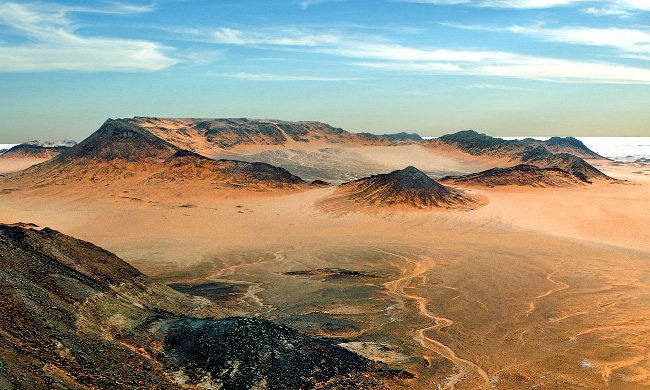Crater Field

Picture of crater GKCF13, of diameter 950 m.
Using the PALSAR mosaic, we also detected more than 1300 small crater-like structures distributed over an area of 40,000 km2 in the western Egyptian Desert, close to the Gilf Kebir plateau.
Sixty-two of them were visited in the field during February and December 2004. Morphological observations, rock samples and ground-penetrating radar data were obtained. Shatter cone-like features, breccia and sub-planar fractures were observed in the vicinity of most of the craters, but the impact origin of the field still has to be confirmed, since hydrothermal vent complexes could also explain some of our observations.
Whatever its origin, the Gilf Kebir crater field is of great scientific interest and is a major element of the geological history of western Egypt.
Ph. Paillou, A. El Barkooky, A. Barakat, J.-M. Malézieux, B. Reynard, J. Dejax, E. Heggy, "Discovery of the largest crater field on Earth in the Gilf Kebir region, Egypt", C.R. Geoscience, vol. 336, pp. 1491-1500, 2004.
E. Heggy, Ph. Paillou, "Mapping structural elements of small buried craters using GPR in the southwestern Egyptian desert: Implications for Mars shallow sounding", Geophysical Research Letters, vol. 33, L05202, 2006.
Ph. Paillou, B. Reynard, J.-M. Malézieux, J. Dejax, E. Heggy, P. Rochette, W. U. Reimold, P. Michel, D. Baratoux, Ph. Razin, J.-P. Colin, "An extended field of crater-shaped structures in the Gilf Kebir region – Egypt: Observations and hypotheses about their origin", Journal of African Earth Sciences, vol. 46, pp. 281-299, 2006.